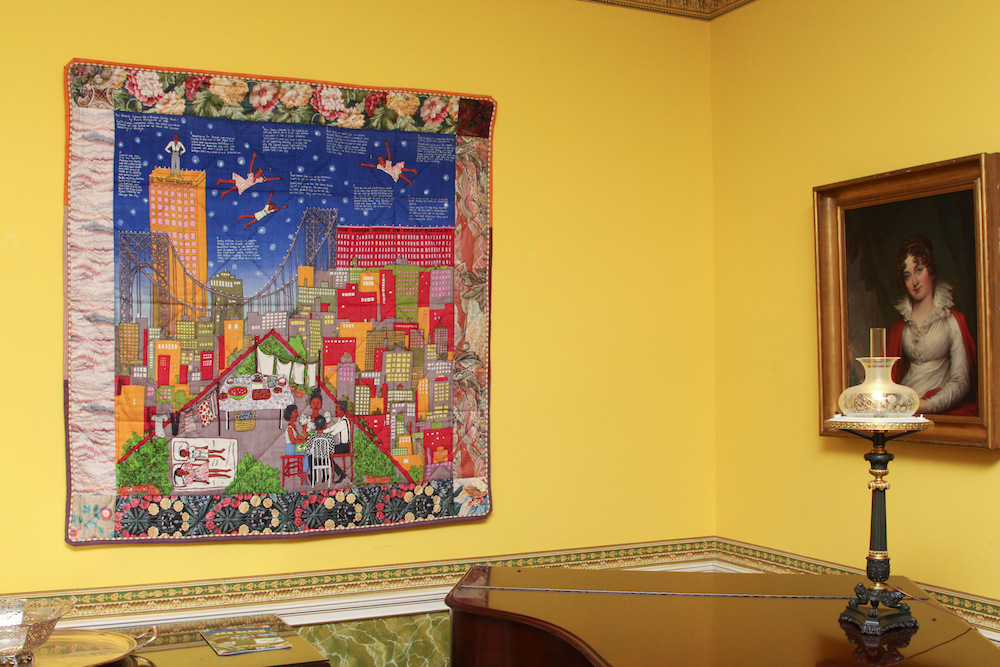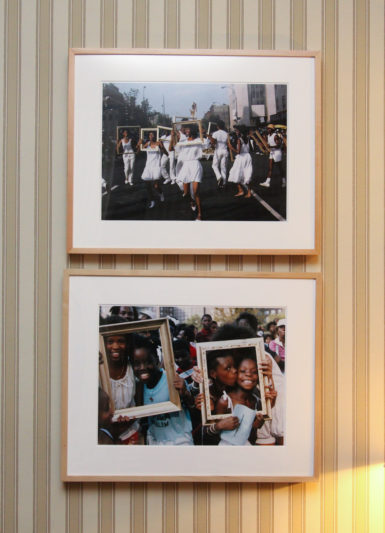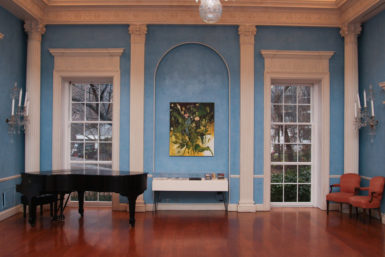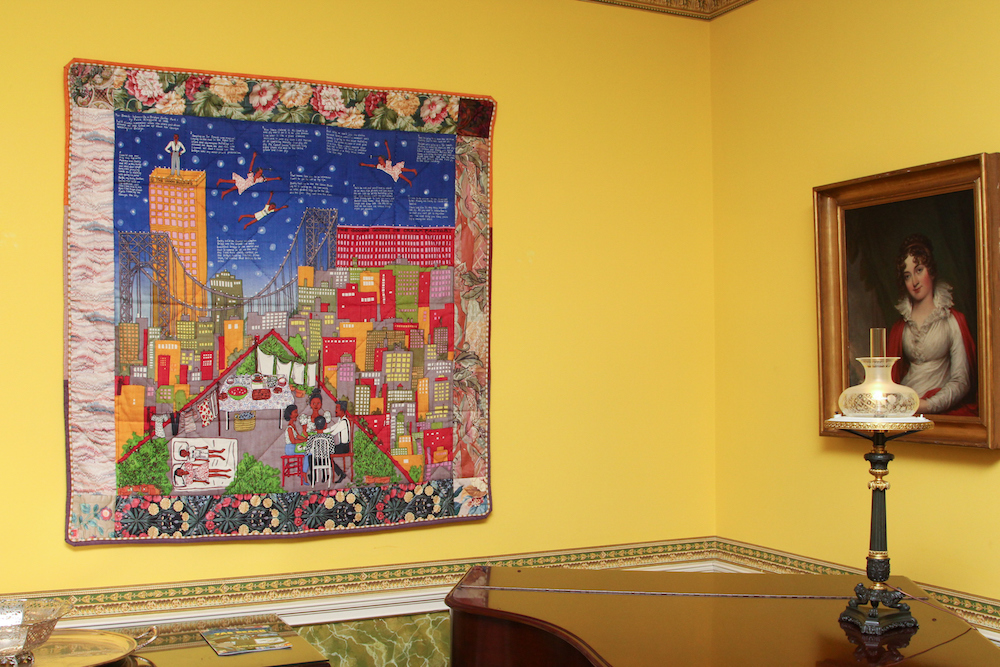[ad_1]

Inside Gracie Mansion: Faith Ringgold’s Tar Beach II, 1990, with a portrait of Elizabeth Stoughton Wolcott, the wife of William Gracie, whose father built the house in 1799. It became the mayor’s official residence in 1942.
MICHAEL APPLETON/MAYORAL PHOTOGRAPHY OFFICE
‘I don’t think you can go there without having, at some level, more of an understanding of what New York was,” the biographer Robert A. Caro once said of Gracie Manson, the official residence of the city’s mayor and his (so far, always his) family. For visitors this year, though, special lessons about the city are on offer in the form of a moving art exhibition titled “She Persists: A Century of Women Artists in New York.”
With work by more than 40 figures connected to New York (some famous, others obscure), it is an expansive, full-throated love letter to the city—and, even more so, to its people. New Yorkers are cracking smiles and dancing as they hold gold frames around their heads in photographs of Lorraine O’Grady’s Art Is performance at the 1983 African-American Day Parade. In a 1940 Isabel Bishop print, two women—office workers, probably—are enjoying a break at a lunch counter. And in a 1948 photograph, Ruth Orkin catches a mother and daughter sitting on a suitcase in Penn Station, looking steeled for a long journey.

Two 1983 photographs from Lorraine O’Grady’s ‘Art Is’ series.
MICHAEL APPLETON/MAYORAL PHOTOGRAPHY OFFICE
True to its name, “She Persists” is a show about resilience and how ideas, influences, and networks of support flow across generations in this jam-packed town. In a 1975 painting, Alice Neel has depicted her daughter-in-law looking not a little nervous as she holds her infant daughter, Elizabeth, who has grown up to be a formidable painter in her own right. A vitrine protects pins and books by Shirley Chisholm, the first black woman elected to Congress—and the subject of a forthcoming monument in Brooklyn’s Prospect Park. Above that case hangs a sumptuous but melancholy still life of flowers by the promising young painter Jennifer Packer that takes its title from an activist mantra: Say Her Name (2017).
The artists in the show have worked all over the city, and Berenice Abbott stands as an exemplary case: in two 1936 photos shot a few months apart, she has captured a family on the steps of a Brooklyn residence and the George Washington Bridge. And there is the GWB again, in the background of Faith Ringgold’s silkscreened quilt Tar Beach II (1990), not far from a boy and girl lying on the roof of their apartment building. They are picturing themselves flying through the night sky.
“She Persists,” which was curated by the art historian and writer Jessica Bell Brown, is filled with such thrilling, optimistic moments. But it is also clear-eyed about the pain and injustice that New York harbors. A classic Guerrilla Girls print starkly states the discrimination faced by women artists; a pink 1994 Kay Rosen text piece addresses responses to the AIDS crisis; and a photo shows the pioneering but under-recognized African-American sculptor Augusta Savage at work on The Harp, her masterwork for the 1939 World’s Fair. It’s a plaster of 12 black singers arrayed so as to suggest that mellifluous stringed instrument, and it was destroyed after the expo because there was no money to cast it in bronze.

At front, Ana Mendieta’s La Vivación de la Carne (Vivafication of the Flesh), 1982; in back, Carmen Herrera’s Yesterday, 1987.
MICHAEL APPLETON/MAYORAL PHOTOGRAPHY OFFICE
These works generate an extra frisson inside the luxe interiors of such a sanctum of power, as does a faintly menacing sculpture by Kara Walker (who was born seven years after Savage’s death) on view outside: a black pile of bronze accompanied by two dismembered feet titled Invasive Species (To Be Placed in Your Native Garden), 2017.
Other giants in the show include Lee Krasner, Cindy Sherman, Helen Frankenthaler, and Betty Parsons, the redoubtable dealer of Abstract Expressionism who made spare, inventive sculptures and paintings of her own. (“I would give up my gallery in a second if the world would accept me as an artist,” Parsons once said, according to the artist Richard Tuttle.)

Jennifer Packer’s Say Her Name, 2017, hanging above a vitrine with items related to the life of Shirley Chisholm.
MICHAEL APPLETON/MAYORAL PHOTOGRAPHY OFFICE
But the truly unforgettable piece, for me, is a 1980 photo by Mierle Laderman Ukeles, who for decades has served as the unpaid artist in residence at the Department of Sanitation. She’s sitting on a stool at a diner, accompanied by three of the 8,500 sanitation workers whose hands she set out to shake for one piece. Each time she did so, she said to them something that could be addressed to every artist in this remarkable show—and that should be said more often, to more people: “Thank you for keeping New York City alive.”
“She Persists: A Century of Women Artists in New York” opens on February 4 at Gracie Mansion, on East End Avenue at 88th Street, and can be viewed on public tours that are booked online. The show runs through December.
[ad_2]
Source link

